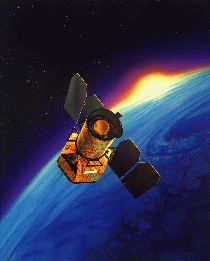Science
The GALEX Arecibo SDSS Survey will deliver catalogs of HI and value-added properties which will be used as
the basis for a large number of science investigations. Measured HI fluxes will be combined with
derived physical parameters from SDSS and GALEX (e.g. stellar mass (M
*), star formation rate (SFR),
dust attenuation, stellar velocity dispersion, size, stellar mass surface density, AGN properties, metallicities).
Initial science investigations will include:
- Distribution function of gas fraction as a function of M* and SFR in local galaxies
The GASS survey will, for the first time, provide an unbiased estimate of the distribution of the gas
fraction in galaxies down to a limit of ~1.5%.
- Relation between optical and UV indicators of star formation and the gas content of galaxies
To what extent indicators such as Hα equivalent width or UV/optical colors can be used to predict
the gas content of a galaxy?
- Baryonic scaling relations (in combination with ALFALFA data)
How do properties such as rotation speed, velocity dispersion, size, density etc. scale as a function
of the total baryon content (Mgas+M*) of the galaxy? Can we interpret these relations
within the framework of hierarchical galaxy formation models?
- Gas in and around nearby AGN
Recent work has indicated that the presence of a large-scale reservoir of gas may be important for
fuelling of black holes (Kauffmann et al. 2006). Using emission-line indicators of AGN activity available
from the SDSS spectra, we will explore the connection between the presence of gas in the galaxy and accretion
onto its central supermassive black hole.
- Connection between gas content and dust attenuation
Star-forming transition galaxies have high gas-phase metallicities and high inferred dust content.
The GASS data will allow us to explore the relation between dust, metallicity and the gas content of galaxies.
- Relationships among HI and the extended UV (XUV) disk phenomenon
GALEX observations have revealed that some nearby massive galaxies have very extended UV-emitting disks
(Thilker et al. 2005; Gil de Paz et al. 2005, 2007). The Arecibo data will allow us to quantify the relation
between these XUV disks and the HI content of the galaxy.
- Origin of the mass metallicity relation
By measuring gas masses as well as gas-phase and stellar metallicities, we will explore whether the relation
arises as a result of supernovae-driven ejection of metals or incomplete processing of gas into stars.
- Environmental dependence of M(HI)/M*
It is well known that galaxies in very high density environments, such as clusters, are gas deficient.
The GASS survey data will allow us to study trends in gas deficiency over a wide range of local densities
and quantify in detail how the well-known star formation/density relation correlates with the trends seen in the gas.
This will yield insights into whether similar quenching processes operate at different overdensities.
- Gas properties of paired and interacting galaxies
It is well known that star formation rates are enhanced in galaxies that are experiencing tidal interactions
with close neighbours. Pairs will be identified using the optical/UV data. By studying their gas properties,
we will constrain the efficiency and the timescale with which the available gas is converted into stars by this process.
Barbara Catinella
Last modified: Wed Aug 22 2007





